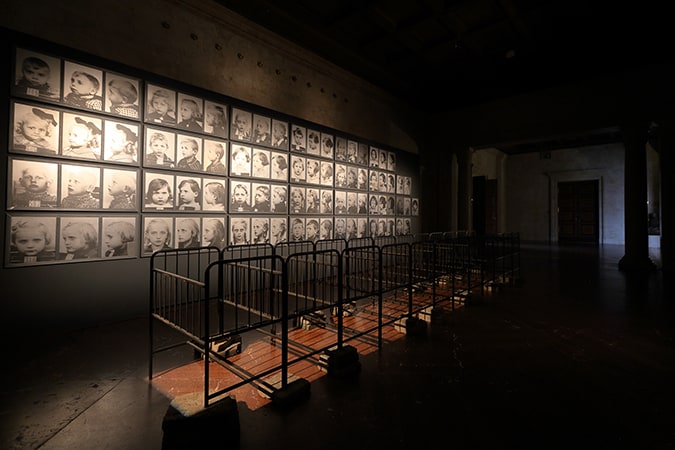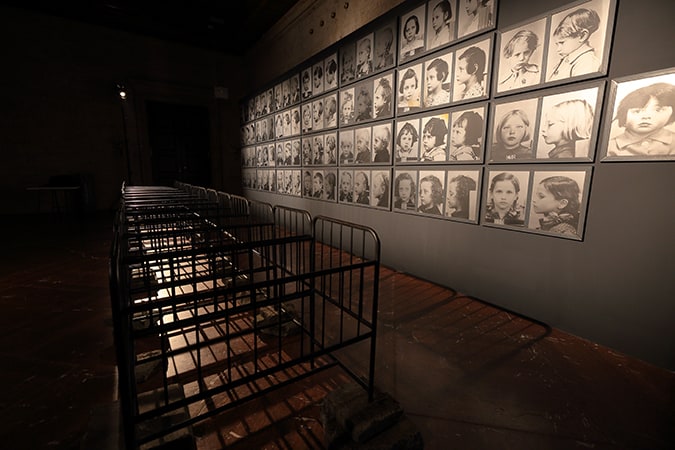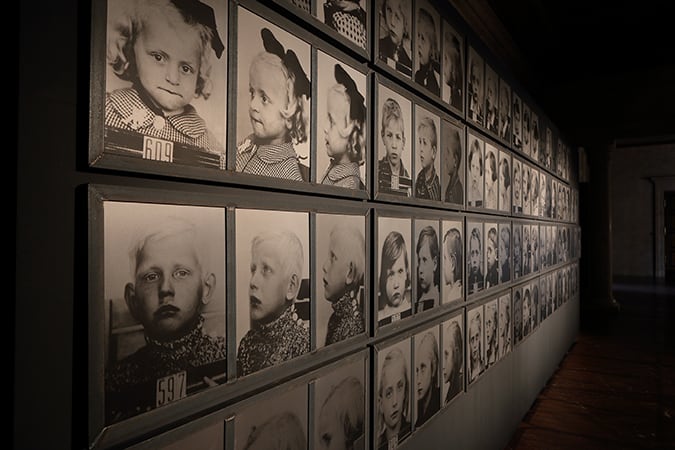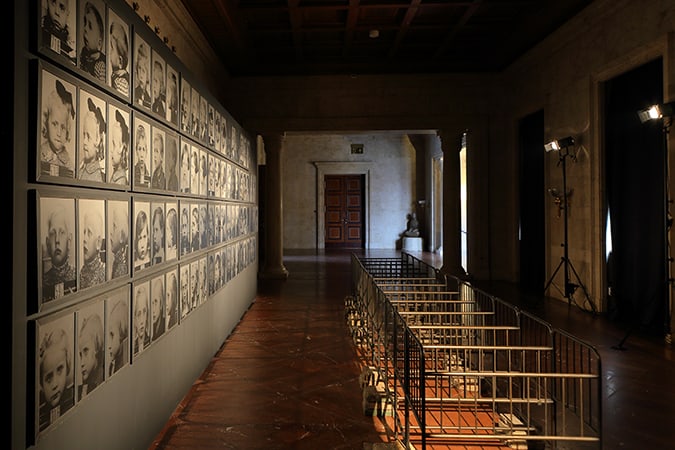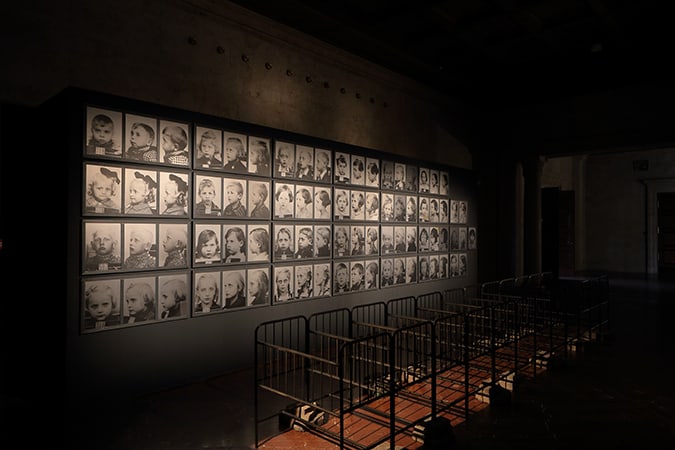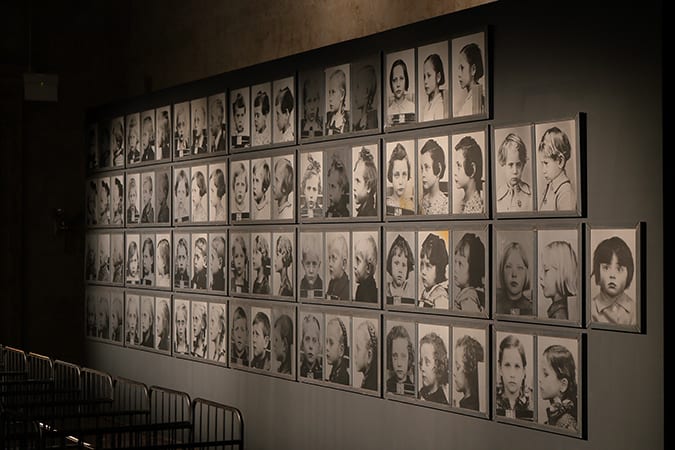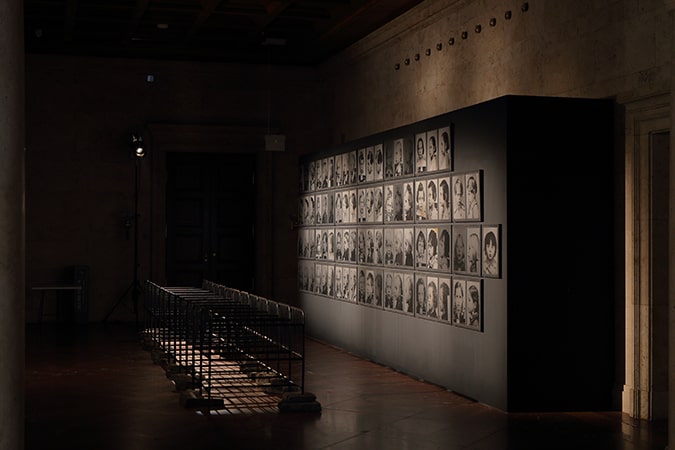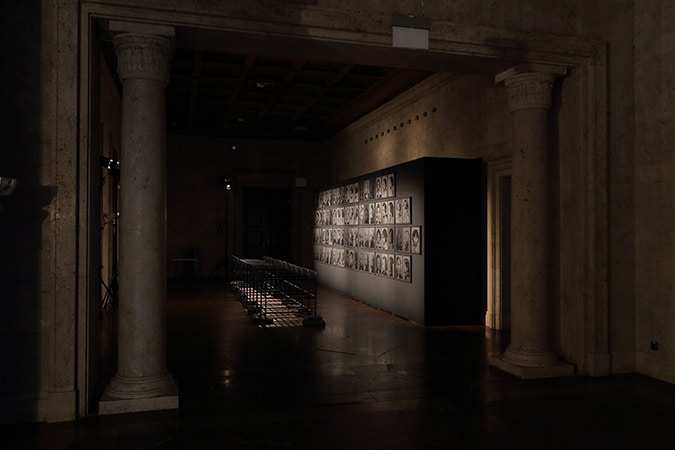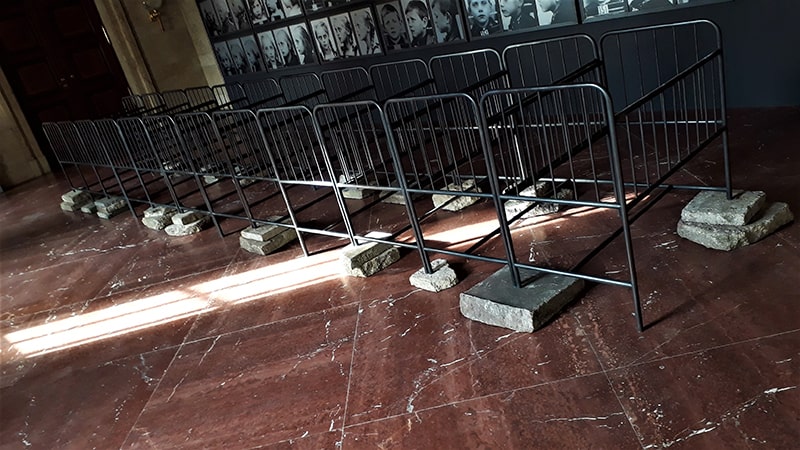Rassenhygiene. Research of the SS Main Race and Settlement Office,
Rasse- und Siedlungshauptamt, RuSHA - (Wartheland)
| title: |
Rassenhygiene. Research of the SS Main Race and Settlement Office, Rasse- und Siedlungshauptamt, RuSHA - (Wartheland) |
| year: | 2019/20 |
| dimensions: | 800/300 cm |
| technique: | steel, photo prints on steel, old concrete tiles |
| description: | After the aggression against Poland on September 1, 1939 and the annexation of the western part of the country, experts on race and settlement from the SS dealt with the inhabitants of these lands and the Volksdeutsches who came here from Eastern Europe. As part of the ethnic reorganization planned by Himmler and his associates, large-scale population expulsions and displacements were carried out, as well as racial studies. They affected many millions of people and were decisive in starting the "Final Solution". About half a million Jews from western Poland were murdered in Auschwitz either on the spot, in mobile gas chambers in Chełmno on the Ner or in extermination camps in the General Government. The murder of the Jews was supposed to be only a terrifying introduction to the "Germanization of the territories incorporated into the Reich." A significant part of the Polish population was also "liquidated", "resettled" or assigned to slave labor.
It is estimated that through the activity of the SS Main Race and Settlement Office, Rasse- und Siedlungshauptamt, (RuSHA), the greatest forced migration of peoples in the history of Europe took place. The office was responsible for conducting racial research and assessing the racial value of the population of the conquered territories in connection with the German Germanization policy implemented in the territories occupied by the Third Reich. Project consisted in carrying out an extensive search of archival materials (mainly at the departments of the Institute of National Remembrance in Poland, the Western Institute and the National Archives in Poznań) relating to the activities of the Main Office of Race and Settlement of the SS (Rasse- und Siedlungshauptamt, RuSHA), as well as Lebensborn e.V. association, in particular research in the so-called Warta Country (Wartheland). Discovered material traces: racial surveys, photos of the subjects, mainly children, were the starting point for the implementation of the Rassenhygiene installation. German eugenics, race hygiene (Rassenhygiene) - was an ideology created to protect the "purity of race" and biological regeneration of the German nation and to stop the progressive physical and mental degeneration of the peoples of Western civilization, which was noticed in the West in the second half of the 19th century. The concepts of native breed hygiene shaped the views of the founders of the Nazi ideology, and then to a large extent determined the entire policy of the Third Reich. It was in the Lebensborn centers that the appropriate conditions were created for "renewing the German blood" and "breeding the Nordic race of superhumans" through the selection and selection of women and men for reproduction within the demographic and political assumptions of Nazi racial policy. In addition to officially declared activities, the Lebensborn association also dealt with "the robbery of valuable blood". As a result, many thousands of children were forcibly Germanized, mainly from the occupied countries of Eastern Europe, from Poland, Russia, the Czech Republic, Ukraine, Belarus, and Yugoslavia, and then transferred for adoption to German families. The installation includes, among others sparse published portraits of children subjected to selection (in the German Resettlement Center of the Warta Region) and probably Germanization in order to strengthen the "Nordic" character of the German nation. Many of these children never found their way back to their parents. |
© Dorota Nieznalska 2009-2023 | privacy policy
website implementation: Brandrei.com
